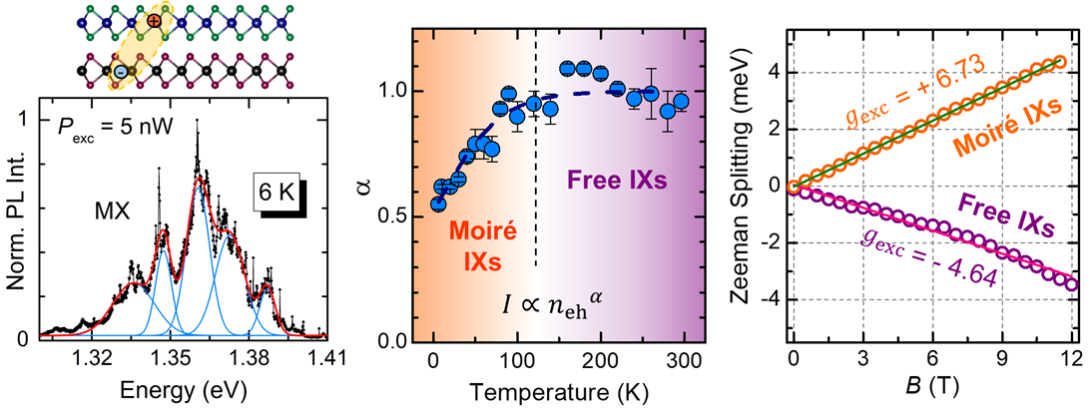Date:

The large interest of scientists for 2D crystals regards them not only as standing alone lattices, but also when combined as Lego bricks. Indeed, the all-surface nature of 2D crystals and the lack of lattice-matching constraints prompt the opportunity to stack different atomically thin planes into hetero-structures. The formation of 2D hetero-structures leads to engineerable physical and optical properties, rich with surprising physical effects and applications.
A further boost to the creation of 2D hetero-structures comes from the possibility to play with the relative twist angle between the 2D lattices forming the hetero-structure that has led to the to emerging field of twistronics. Indeed, inherent to the stacking process is the formation of a twist angle-dependent moiré superlattice that superimposes on the topographic and electronic structure of the single 2D crystals. This phenomenon has been particularly investigated in hetero-structures made of semiconducting 2D materials, such as transition metal dichalcogenides, which feature a sizeable band gap and peculiar valley-spin properties. The moiré potential can be as deep as 100 meV and is able to trap excitons (electron-hole bound states) and other composite quasi-particles, such as trions and multi-excitons. Moiré-confined excitons (i.e. moiré excitons) are formed by charge carriers residing in the different layers of a hetero-structure. The space-indirect character of moiré excitons endows them with long lifetimes that, in conjunction with the depth of the moiré potential, make them suitable for the observation of high temperature (>100 K) Bose-Einstein condensates. Moiré excitons are also particularly interesting for quantum technologies as they can be exploited as nanoscale-ordered arrays of quantum emitters [1].
For quantum photonics applications, the thermal stability of the moiré-induced confinement of the excitons plays a crucial role and a fundamental question arises: Up to what extent can moiré excitons be regarded as truly moiré-confined?
Elena Blundo and co-authors answer this crucial question in an article published in Nature Communications reporting temperature-/time- and magnetic field-dependent optical spectroscopy experiments on WSe2/MoSe2 2D hetero-structures [2]. The work led by the OPERA group at the Physics Department of Sapienza is the result of a collaboration with scientists at the CNR (Italy), Warsaw University (Poland) and NIMS institute (Japan). Elena Blundo et al. pinpoint the conditions under which excitons escape from the moiré potential by carefully investigating the effects of the temperature on the exciton (i) emission lineshape (ii) temporal dynamics, and (iii) magnetic moment. Remarkably, exciton Zeeman splitting measurements up to 16 T unveil that the exciton magnetic moment reverses its sign when the moiré potential is not capable of localising excitons at elevated temperatures. In addition, the determination of the moiré exciton magnetic moment at different excitation powers reveals for the first time the different symmetries of the moiré potential related to the local atomic registry of the hetero-structures.
These findings shed new light on the truly confined nature of the exciton states in a moiré superlattice with increasing temperature and exciton density, thus setting the conditions, e.g., for the observation and stability of nano-arrays of quantum emitters at elevated temperatures in moiré superlattices. The results demonstrate also how magnetic fields represent a valuable tool to determine the localised or delocalised status of charge carriers in 2D hetero-structures, which can be important for the understanding of fundamental effects, such as the formation of highly correlated electronic phases and boson condensation phenomena.
[1] L. Du et al., Moiré photonics and optoelectronics. Science 379, eadg0014 (2023).
[2] E. Blundo et al., Localisation-to-delocalisation transition of moiré excitons in WSe2/MoSe2 heterostructures, Nat. Commun. 15, 1057 (2024).
Click here for the article.


